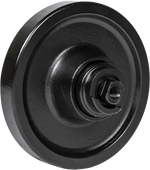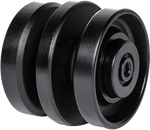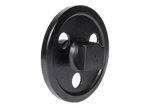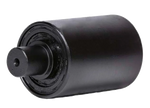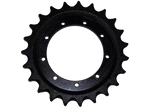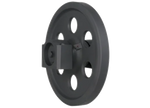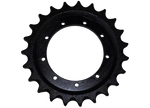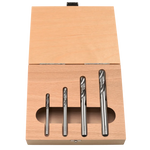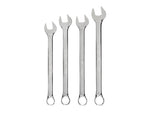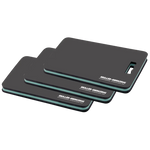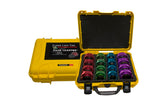Featured Products
1,000 Hour Service Interval Guide for a Komatsu PC200LC Excavator – Part 2
Written by Luis Montes Updated On January 31, 2025

Previously, we drained the swing gearbox and engine oil and changed the excavator’s engine oil and primary fuel filter on a Komatsu PC200LC excavator as part of the 1,000 hour service interval.
In this post, we’ll cover filling the engine oil, changing the secondary fuel filter, and checking the engine coolant level and condition.
We also have a video version on the Tekamo HD YouTube channel. Check it out.
Replace the Secondary Fuel Filter
First, close the engine oil drain valve and reinstall the swing gearbox plug. Start by tightening the gearbox plug by hand, and whatever tool you use, don’t overtighten the plug.
Don’t reinstall the belly pan yet. Do it at the end to double-check for leaks.
Now, go to the top of the machine, release the hood latches, and lift the hood to access the engine bay.

The secondary fuel filter reminded us why not to use tools to tighten spin on filters —we struggled a bit to loosen it. To unthread the filter, turn it clockwise.
Due to the lack of space, we put a rag underneath the fuel filter instead of a pan to catch dribblings.
As mentioned and explained in the first part of this 1,000 hour service series, properly prime the new secondary fuel filter and lube the seal before installation.

We are prone to preventative maintenance approaches on heavy equipment and have previously shared the benefits of such practice. Thus, we recommend changing the O-ring (which comes with the filter) every time you do the fuel filter. Hot temperature exposure will gradually affect the sealing ability of O-rings.
Before moving forward, let’s briefly discuss PPE (Personal Protection Equipment).
Did you notice in the picture above that Shawn (our expert heavy-duty technician) isn’t using gloves?
Gloves, coveralls, and safety glasses are part of the PPE you should wear when servicing heavy equipment. In this case, Shawn applied PR88, a water-soluble skin protection cream, to his hands instead of gloves to prevent fuel and oil from directly contacting his skin.
Both fuel and oil prolonged contact negatively affect the skin:
- Exposure to fuel can cause irritation, redness, dryness, cracking, and even burns on the skin.
- Mechanic oil, or used engine oil, can cause significant skin irritation and damage when exposed to it for a prolonged period. In severe cases, it can lead to dermatitis, skin rashes, and even potential skin cancer.
Install the fuel filter hand tight.

Fill The Engine Oil
The Komatsu PC200LC’s engine requires 6 gallons (23 liters) of oil. The exact oil quantity is in your machine manual.

We used Tekamo HD brand engine oil. If, as in the case of the Temamo HD brand, the oil bucket you purchase features a vent, remember to open it to avoid the glugging effect when pouring the oil, but rather have a nice, steady oil stream.
Shawn used one of those fancy funnels with a screen that picks up any debris that might fall into the system.
Before checking the level with the dipstick, wait for the oil to drain all the way down. Then, take several measurements to ensure you reach the top mark of the dipstick. You could also run the machine and take one last measurement to be 100% sure.
Check the Engine Coolant Level and Condition
Check the coolant level and also its protective capacity. By protective capacity, we mean the DCA (Diesel Coolant Additive) charges, which break down over time, affecting the coolant PH levels and leading to solids buildup. PH test strips can determine your coolant protection level and DCA charges.
An excessively high PH (overly alkaline) causes the additives to break down and scale, leading to the buildup of solids.
If the coolant’s pH drops and becomes acidic, it accelerates corrosion, leading to metal degradation and the release of particles into the coolant.
In either case, acidic and alkaline conditions make the coolant act as an electrolyte, making it electrically conductive and allowing the flow of ions, thus causing electrolysis.
Engine block electrolysis happens because stray electricity (unintended electrical energy that escapes from its intended circuit and flows through unintended pathways) uses the coolant as a shortcut, damaging the engine’s metal parts.
Next Post
Our next article will go over replacing the hydraulic and foam breather filters and refilling the swing gearbox oil.












